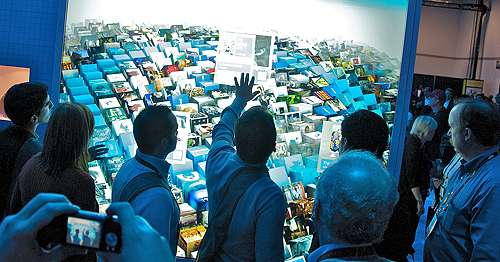Interactive public displays not being used to full potential, says research

Interactive public information displays and wallflowers have something in common, according to University of Sydney information technologies researchers: they simply sit around hoping someone will notice them.
The need for Interactive Public Information Displays (PIDs) to overcome a number of challenges will be reported this week at the International Symposium on Pervasive Displays in Mountain View, California.
The work, which is part of surface computing research at the University of Sydney, reveals that despite holding important information or relevant subject matter such as train timetables, flight arrival and departure information, weather updates and news, it is hard to make realise they can explore interactive PIDs.
Lead researcher Professor Judy Kay, from the University's School of Information Technologies, says for interactive PIDs to be more useful they need to alert users to their presence and their interactive capabilities - they need to help people really engage with them.
"They need to convey to users that they are not just conventional displays and that people can interact with them. Fundamentally, they need to help people realise what they offer and how people can make them do the job they were deployed for in the first place," says Professor Kay.
The study identified ways in which users are significantly more likely to notice an interactive display, such as using spotlight and follow-me visual cues in combination with dynamic skeletal representations.
What is important, says co-author and postdoctoral researcher Dr Rainer Wasinger, also from the School of Information Technologies, is that interactive display designers effectively communicate the "interactivity" of PIDs to end-users.
Without this communication, people are likely to assume the display is non-interactive and will often just walk straight past them, says Dr Wasinger.
The research team considered a number of questions, including what interactions are natural and intuitive to end-users, how much content is too much, and how to gauge whether end-users are actually absorbing the information they are viewing.
Dr Wasinger says while initial results show that visual cues such as skeletal representations are useful in conveying PID interactivity, there is a flipside because they may in fact be distracting users away from absorbing the actual content shown on interactive PIDs. Further research will need to find the right balance between attracting and distracting users.
Provided by University of Sydney





















